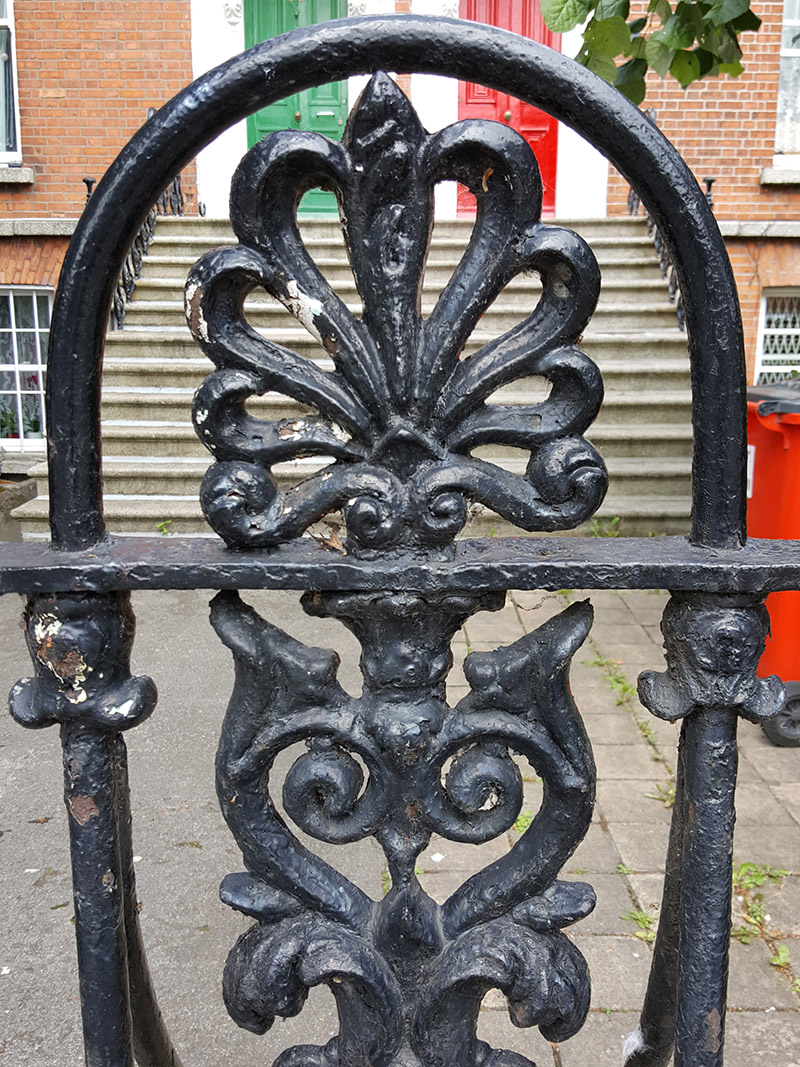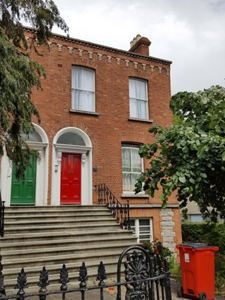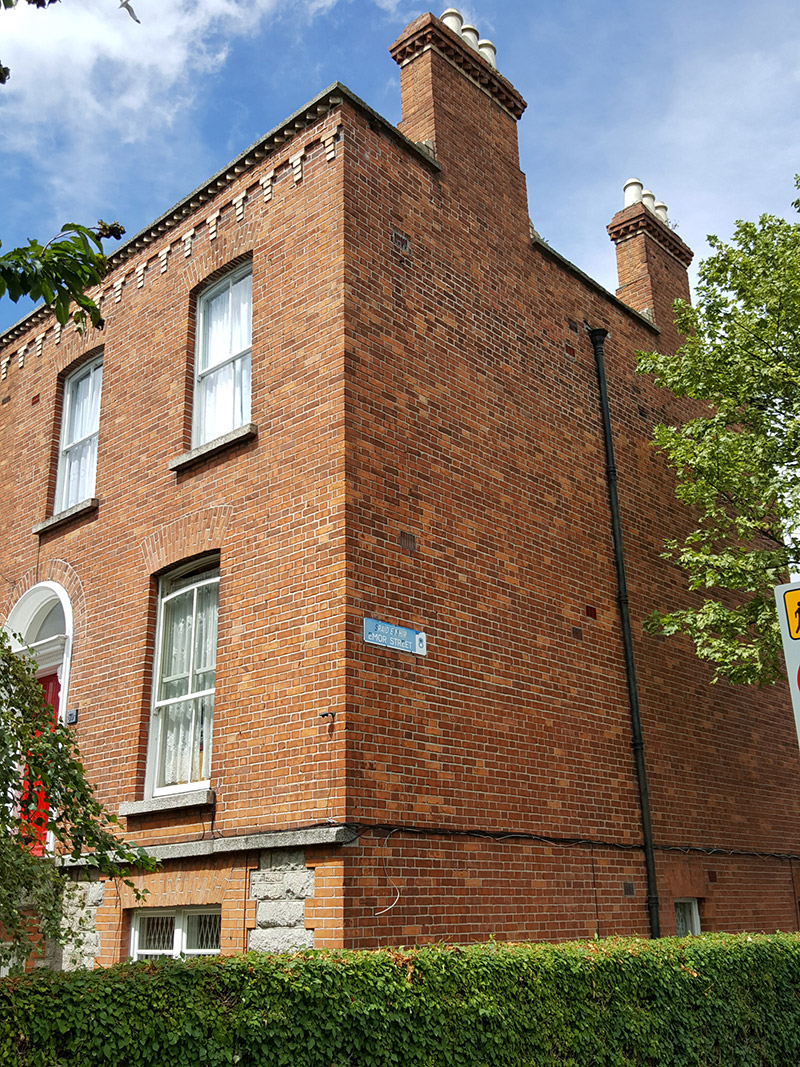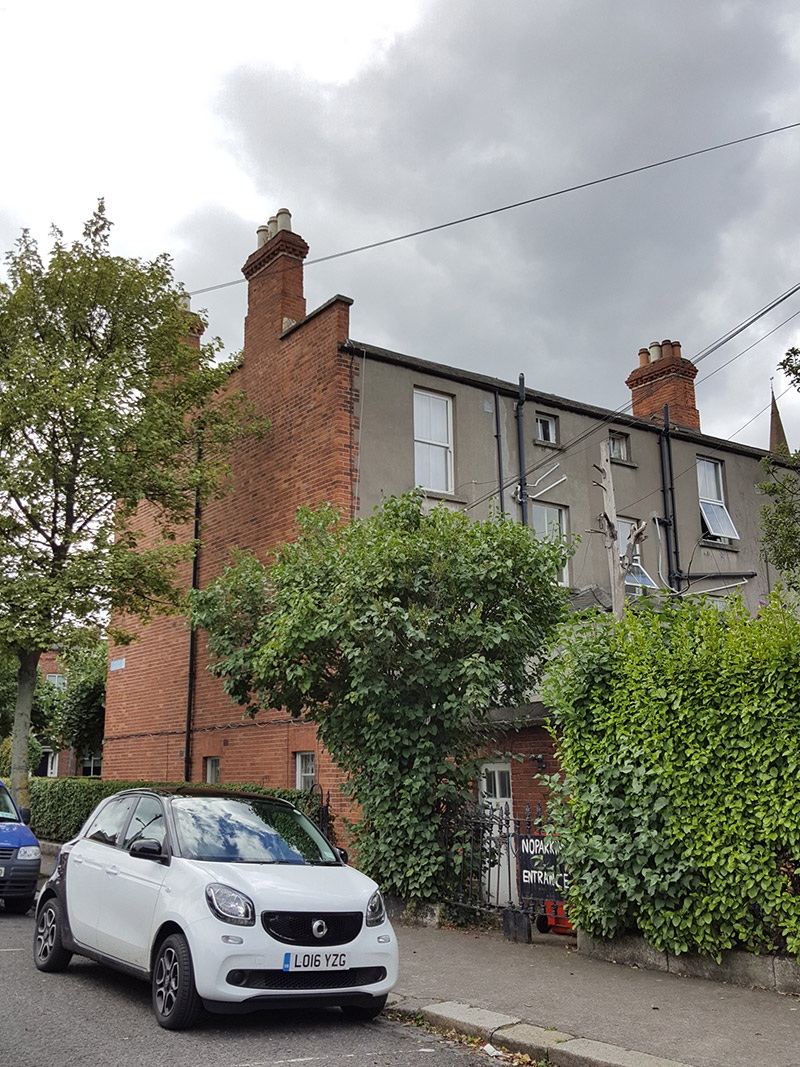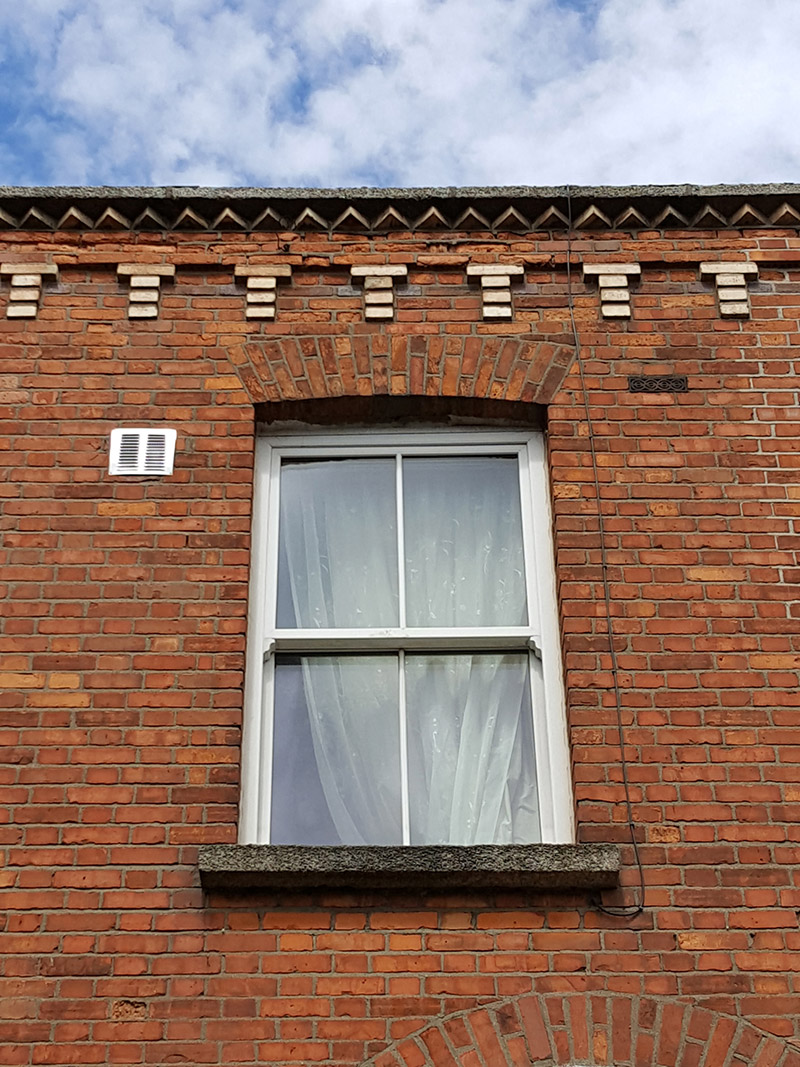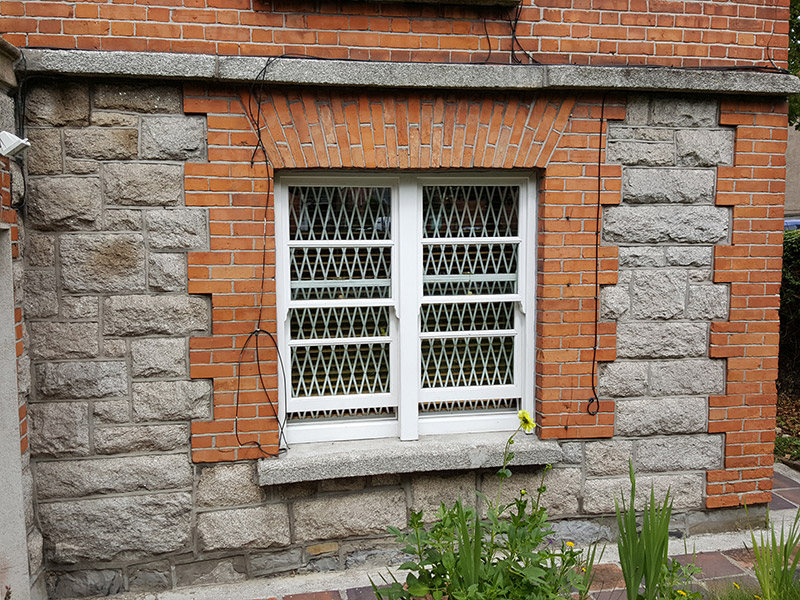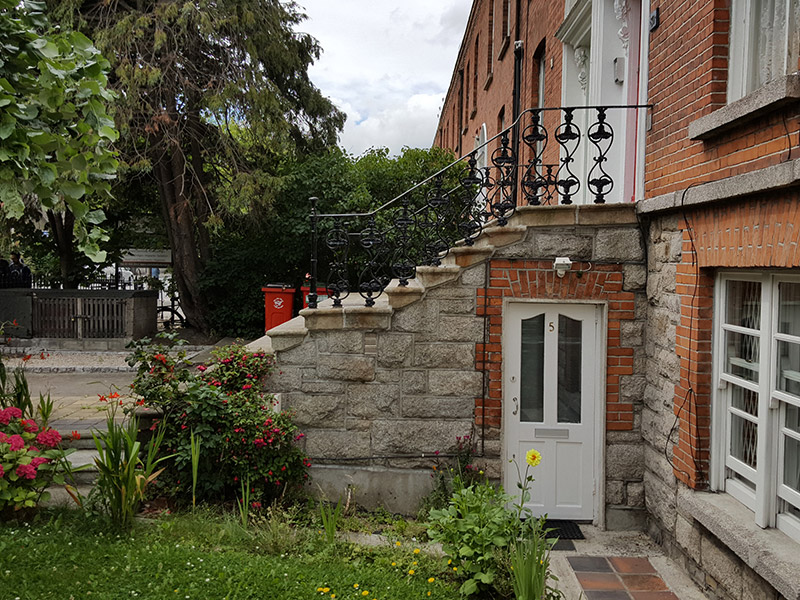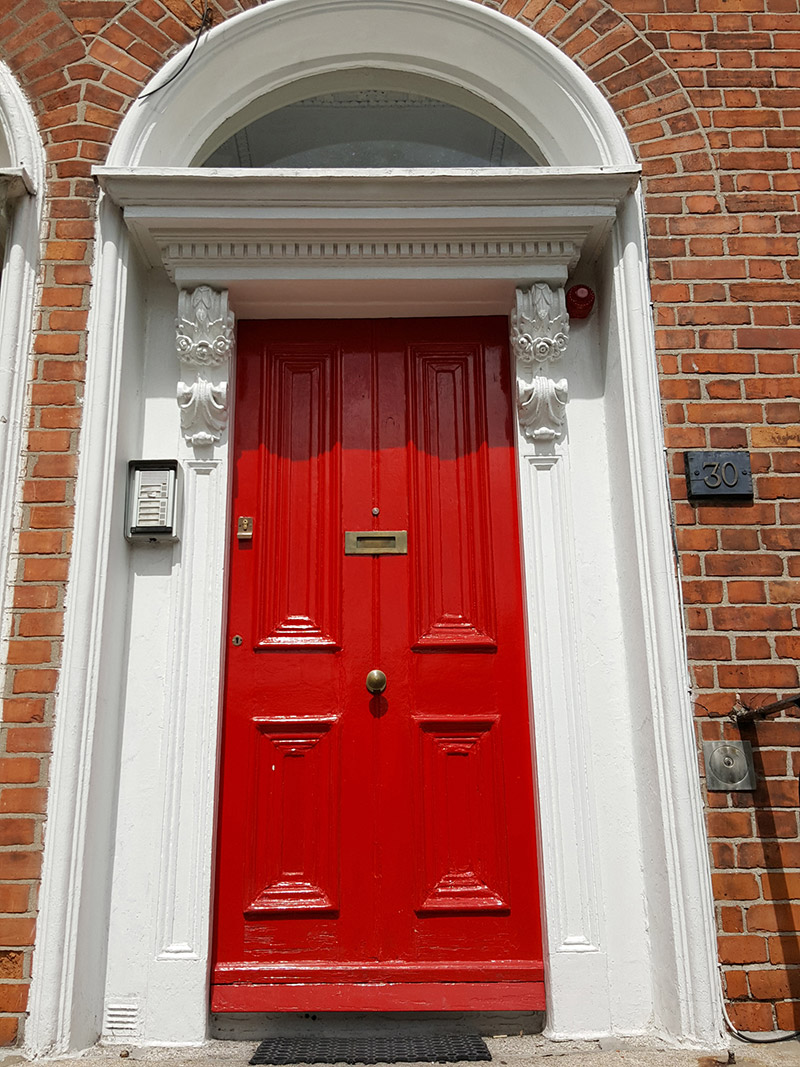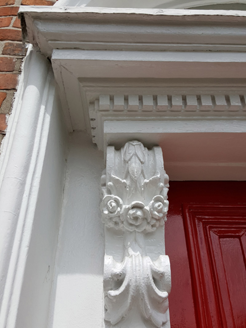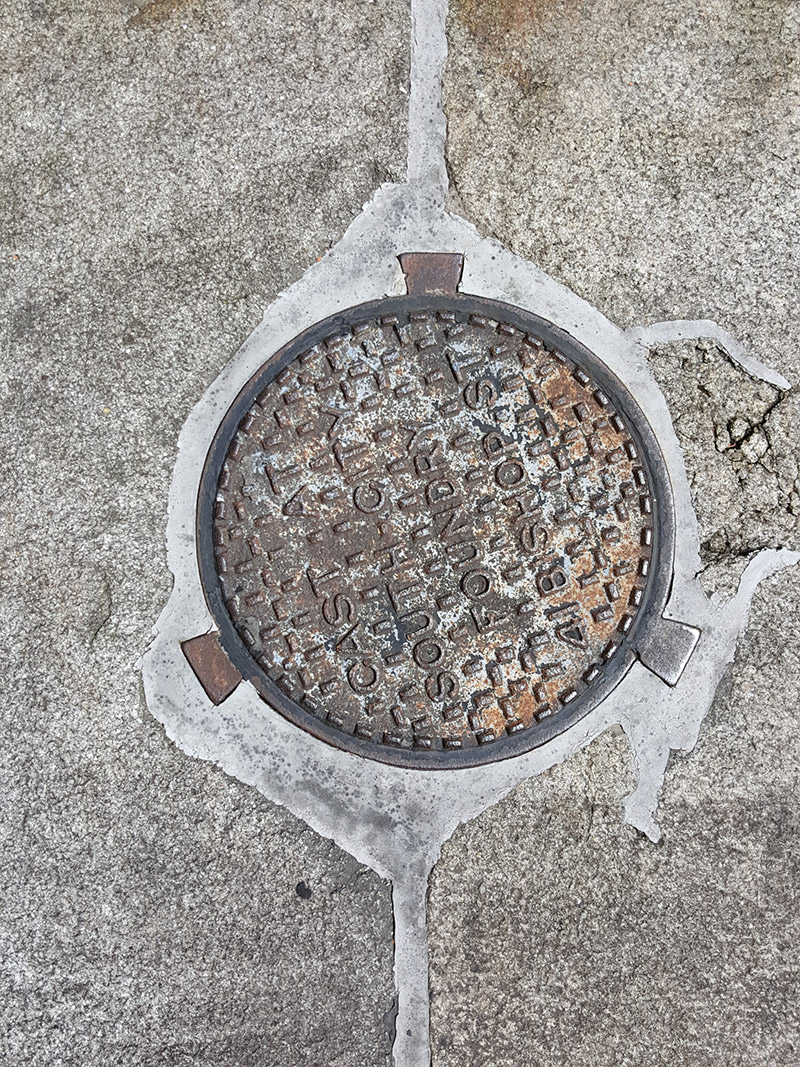Survey Data
Reg No
50110096
Rating
Regional
Categories of Special Interest
Architectural, Artistic
Original Use
House
In Use As
Apartment/flat (converted)
Date
1865 - 1885
Coordinates
315276, 232736
Date Recorded
27/07/2017
Date Updated
--/--/--
Description
Corner-sited terraced two-bay two-storey former house over raised basement, built c. 1875 as one of terrace of nine, having canted-bay window to ground floor of front (south) elevation, and three-storey return to rear. Now in use as apartments. M-profile pitched roof, hipped to west, having parapet with cut granite coping and sawtooth and polychrome brick cornice, red brick chimneystacks with sawtooth detail and clay pots, and some cast-iron rainwater goods. Red brick walling to front, laid in Flemish bond, with cut granite plinth course over rusticated snecked granite basement walling; rendered to rear; and with yellow brick to rear wall of return. Slightly camber-arch window openings with granite sills, raised red brick surrounds to basement openings, and two-over-two pane timber sliding sash windows. Round-headed doorway with moulded render surround, doorcase comprising panelled pilasters, scrolled console brackets with acanthus leaf detail, dentillated cornice, plain fanlight and timber panelled door. Shared flight of ten nosed granite steps having cast-iron bootscrape to platform. Decorative cast-iron railings with foliate motif flanking upper part of steps. Cast-iron gate having decorative finials, flanked by round-headed panels with anthemion finials and having matching railings set on cut granite plinth walls to front garden boundary. Brick to boundary wall to east, laid in Flemish bond, having cut granite coping stone and square-headed doorways with replacement timber doors.
Appraisal
The corner siting of this building provides a more complete understanding of the plan and setting of the terrace of houses that it bookends and which share architectural detailing. Together with the timber sash windows to the side elevation, the decorative railings to the intact front garden, and the brick boundary wall to the rear, it comprises an intact architectural design typical of Dublin's Victorian suburbs. The former Emor demesne, between Heytesbury and Clanbrassil Streets, was sold in 1860 and was developed from 1868 by Thomas Kelly, proprietor of the City Saw Mills in Thomas Street.
